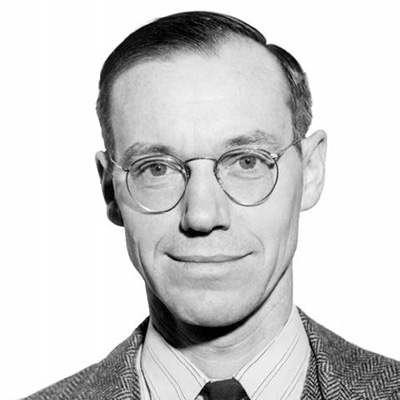Bio
BioLawrence Hafstad was the second director of APL, serving from 1946 to 1947.
Before joining APL, Hafstad was the chief scientist at the Carnegie Institution of Washington’s Department of Terrestrial Magnetism. Seeking to help the war effort, he took temporary leave from Carnegie to join the wartime National Defense Research Committee as vice chairman of Section T. There, he worked alongside Merle Tuve, APL’s first director, on the development of the radar proximity fuze and later served as Tuve’s assistant director.
As APL’s director, Hafstad maintained close ties to the military, leveraging the Laboratory’s unique position and capabilities to quickly respond to military needs. He promoted securing separate contracts with military units to provide APL with more financial stability.
During Hafstad’s directorship, in 1946, APL researchers bolted a 35-mm motion-picture camera onto a captured German V-2 rocket and took the first pictures of the curvature of Earth from space. Hafstad also oversaw the Lab’s ramjet propulsion testing and the development of rocket steering and control, which laid the groundwork for future guided missiles.
A world-renowned leader in guided missile development and nuclear research, Hafstad strongly believed in peace through strength and that APL’s role in peacetime would be as critical to the nation as it had been in wartime. His ability to take a long view of APL’s future and its funding helped ensure APL’s continued existence after the war ended.
Hafstad left APL in July 1947. He went on to coordinate research and development activities for all branches of the military as executive secretary of the Joint Research and Development Board.
Hafstad earned a doctorate in physics from Johns Hopkins University.
